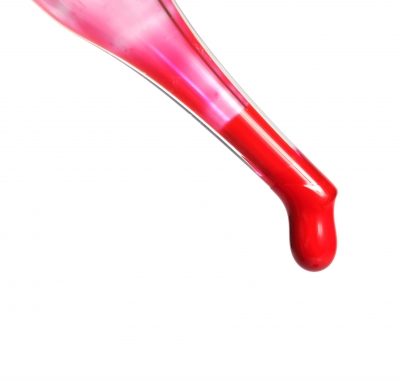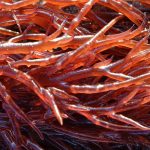
The production of natural colours by fermentation is now well established industrially. Natural being the operative word. Now that food additives such as the synthetic colours are being replaced because of concerns about their psychological/physiological impacts on children, alternatives are readily being sourced. The mould, Monascus purpureus which is red-purple pigmented is important as one of those natural sources of colour and these are non-toxic too. In the Far East, especially in China & Japan, these pigments are produced by fermentation and are added to a range of drink and solid food formulations. The pigments though are not approved in either the USA or Europe.
Pigments In Monascus
The pigment itself also known as anka pigment is made up of six different molecules. These are sub-divided into two groups; two orange forms – rubropunctatin and monascorubrin; two yellow forms – monascin and ankaflavin; two red forms rubropunctamine and monascorubramine). Generally, yellow to purple colours are feasible in the product characteristics are appropriate. The pigments are just water-soluble preferring fat based foods with solubility in ethanol and 1-propanol. Unfortunately they tend to fade with light (visible and UV) and have poor stability across the pH range of 2 to 10.. The light stability is improved by reactions with amines, amino-acids, nucleotides via a ring opening and Schiff rearrangement mechanism. Where it is permitted, the Monascus pigments are added to pate and sausage which retain stability (Fabre et al., 1993) and to replace the nitrites and nitrates which are currently permitted in meats as colour enhancers, but pose health concerns.
Free or immobilised cells of Monascus are produced using either batch-submerged or solid-state fermentation. In fact, Monascus is usually cultivated on rice producing a meal called red rice or red yeast rice which is used in Asian medicine as well as foods. Starches, wheat, corn, soya though can be substituted as the fermentation medium. Solid-state cultivation is quite time-consuming and demands large volumes, so a fed-batch semi-solid cultivation process was developed to overcome the issues of scale-up, volume limitations and improve process control (Lee and Chen, 1998).
One reason for its absence from the product development shelf is that Monascus also produces the mycotoxin citrinin, being particularly damaging to kidney function – a nephrotoxin (Sabter-Vilar et al., 1999).
Monascus may be a suitable alternative to Allura Red if it becomes permitted.
References
Fabre, C.E., Santerre, A.L. Loret, M.O. Baberian, R., Pareilleux, A., Goma, G. Blanc, P.J. (1993) production and Food Applications Of the Red Pigments Of Monascus ruber. J. Food Sci., 58(5) pp. 1099-1102, 1110.
Lee, Y., Chen, D. (1998) Application of Monascus pigment as food colourant. In: ADEBIO Monascus Culture and Applications: Proceedingsof An International Symposium Held at Toulouse, France. ed. Blanc, P. pp. 1–11. The Institut National Des Sciences Applique´es de Toulouse. ISBN: NA.
Sabater-Vilar, M., Maas, R.F., Fink-Gremmels, J. (1999) Mutagenicity of commercial Monascus fermentation products and the role of citrinin contamination. Mutat. Res. 444(1) pp. 7–16.


Leave a Reply